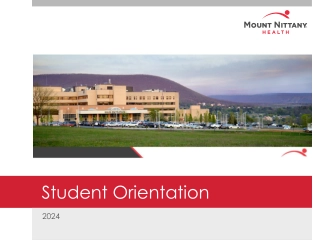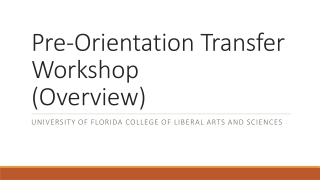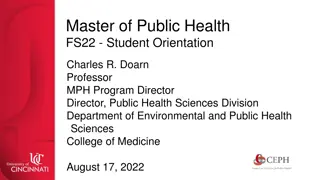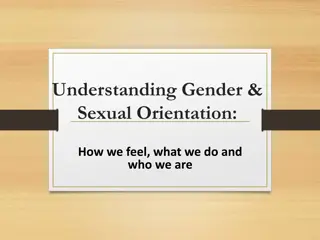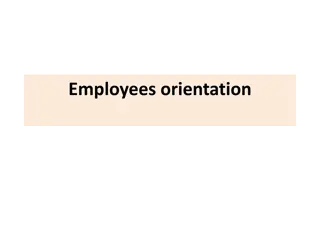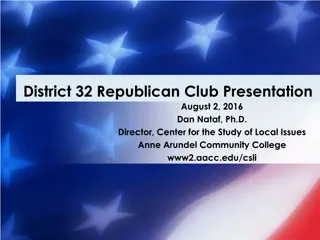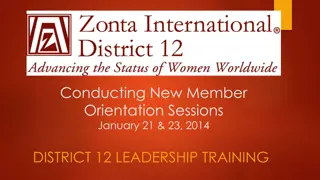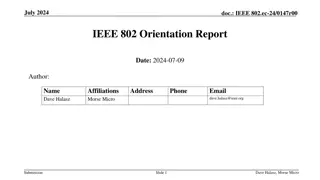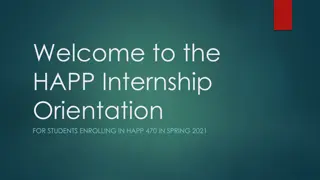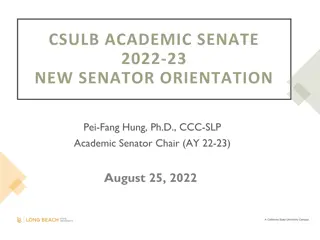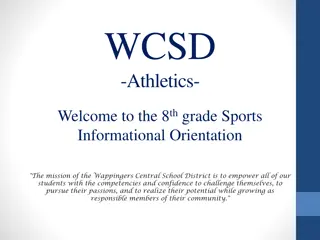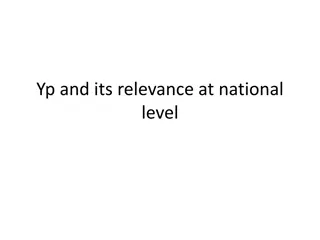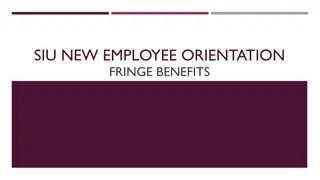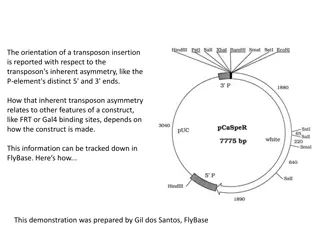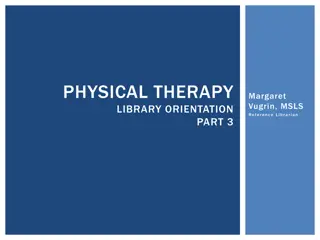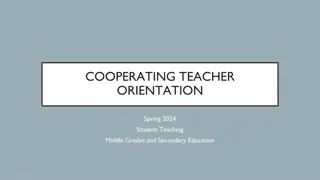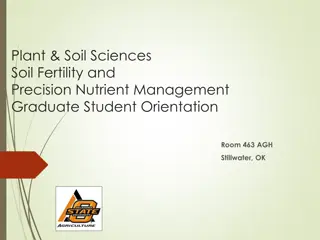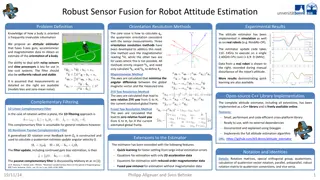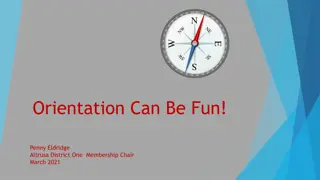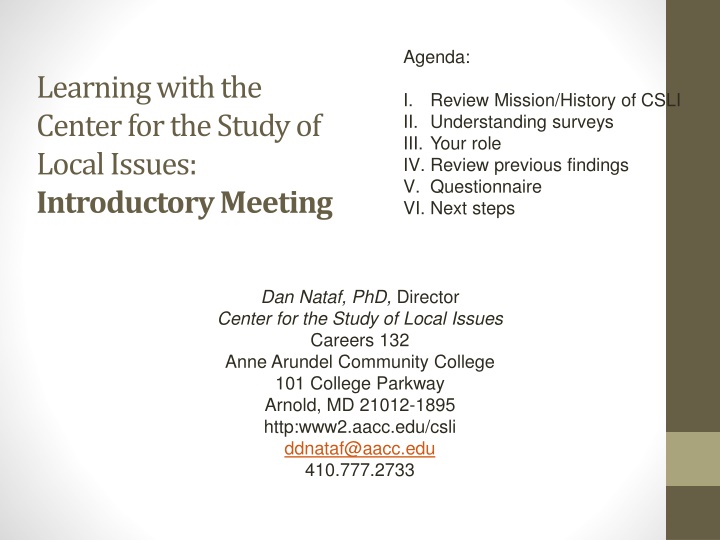
Center for the Study of Local Issues: Mission, History, and Surveys
Discover the mission and history of the Center for the Study of Local Issues (CSLI), its role in supporting civic engagement, and how it conducts semi-annual surveys to gather valuable data. Learn about CSLI's student opportunities, services, and impact on the community.
Download Presentation

Please find below an Image/Link to download the presentation.
The content on the website is provided AS IS for your information and personal use only. It may not be sold, licensed, or shared on other websites without obtaining consent from the author. If you encounter any issues during the download, it is possible that the publisher has removed the file from their server.
You are allowed to download the files provided on this website for personal or commercial use, subject to the condition that they are used lawfully. All files are the property of their respective owners.
The content on the website is provided AS IS for your information and personal use only. It may not be sold, licensed, or shared on other websites without obtaining consent from the author.
E N D
Presentation Transcript
Agenda: Learning with the Center for the Study of Local Issues: Introductory Meeting I. II. Understanding surveys III. Your role IV. Review previous findings V. Questionnaire VI. Next steps Review Mission/History of CSLI Dan Nataf, PhD, Director Center for the Study of Local Issues Careers 132 Anne Arundel Community College 101 College Parkway Arnold, MD 21012-1895 http:www2.aacc.edu/csli ddnataf@aacc.edu 410.777.2733
CSLI History and Mission Historical Background: In business since 1978! 1. Creation and operation as part of Division of Social Sciences: 1978-1999 a community college research center 2 .Operation as part of Sarbanes Center for Public and Community Service 2006-present Advisory Board: 20 +/- community activists, elected officials, government administrators, students, faculty Provides guidance and link to the community both within and outside the campus Staff: Director, Program Specialist, Student Interns
CSLI History and Mission CSLI Mission four elements 1. Provide students opportunities to better understand applied social science research methods while encouraging civic awareness and engagement 2. Serve community and local government by offering research services and communicating survey findings 3. Provide opportunities for faculty professional development 4. Help AACC understand its environment through relevant data collection and analysis
CSLI History and Mission Mission: Provide students opportunities to better understand applied social science research methods while encouraging civic awareness and engagement Activities providing student opportunities: Participation in community surveys Participation in client based research projects Student internships CSLI student club (see www2.aacc.edu/csli/csliclub.htm)
CSLI: The Semi-annual Survey Semi-annual Survey The survey process at a glance 1. Conducted in March and October 2. Telephone interviews 350-550 (record 917) completions 3. Press releases 4. Public presentations 5. Media outreach 6. Web site (http://www2.aacc.edu/csli)
CSLI: The Semi-annual Survey Service Learning and Nataf s Classes Semi-annual survey how students participate for service learning credit (and Nataf s extra credit) Up to five contacts with CSLI Introductory meeting 2-3+ nights of telephone interviews Final meeting review of survey process, findings, SPSS/hypotheses testing Short paper (varies by instructor)
CSLI: The Semi-annual Survey Semi-annual Surveys - Why is your role so important? How do surveys work? 1. Identify a population whose characteristics and attitudes are interesting to us 2. Our population Residents of Anne Arundel County at least 18 years of age 3. Our goal Ask a small group (the sample ) questions 4. Generalize the findings to the whole population (the universe )
CSLI: The Semi-annual Survey Semi-annual Surveys - Why is your role so important? How do surveys work? (continued) Find a proper sample size: costs vs. margins of error Example: Population of 100k+, confidence interval 95% Error 3 5 7 10 Sample Size 1111 384 204 100
CSLI: The Semi-annual Survey Semi-annual Surveys - Why is your role so important? How do surveys work? (Data collection methods) Choices: 1. Face to face personal interviews 2. Telephone personal interviews 3. Self-administered - by mail, exit poll, group setting 4. Online a version of self administered
CSLI: The Semi-annual Survey Semi-annual Surveys - Why is your role so important? How do surveys work? ( Data collection continued) CSLI s process: Telephone personal interviews that s what you will be doing
CSLI: The Semi-annual Survey Semi-annual Surveys - Why is your role so important? How do surveys work? ( Data collection continued) How do we choose who shall participate in survey? Two choices: (1) Randomly select from listed phone numbers (2) Use computer generated likely unlisted residential numbers within your target jurisdiction (3) Add in some cell phone numbers (current option) CSLI s lists of numbers are a 80/5/15 percent mix We start with over 10000 phone numbers!
CSLI: The Semi-annual Survey Semi-annual Surveys - Why is your role so important? How do surveys work? ( Survey assumptions) What are we assuming in using telephone numbers? That everyone in our target universe is equally likely to have a phone and willing/able to answer a survey Could other methods be used to ensure more complete representation? Ideally, yes! But the other data collection methods are harder to implement and/or more expensive
CSLI: The Semi-annual Survey Semi-annual Surveys - Why is your role so important? How do surveys work? (Sources of error) What are other data collection challenges? * Interviewer bias * Social desirability ( Halo effect ) * Unclear questions * Non-attitudes * Non-response bias (both overall and to items) * Unequal representation of subgroups None of these is necessarily a fatal flaw, but should make us sensitive that there are more sources of error than just the statistical margin of error
CSLI: The Semi-annual Survey Semi-annual Surveys - Why is your role so important? How do surveys work? (Getting to the finish line!) What happens to all the completed surveys? 1. Data entry. This means we need to enter all the answers into a database for statistical processing. Statistical analysis. Write a report. Send it out as a press release. Post it on the Web. Use it in public presentations. 2. 3. 4. 5. 6.
CSLI: The Semi-annual Survey Semi-annual Surveys: Recent Major Topics Semi-annual survey topics over the last few years Major issues facing the county Economic conditions and concerns in the county Cost of higher education Sequestration and debt ceiling fed. govt. shutdown County infrastructure needs Death Penalty Presidential job approval Gun control Lots of demographic info: age, income, employment situation, race, religion, gender, party, ideology
Presidential job approval: Fall 07 to Fall 13 70 Bush Obama 61 60 54 53 50 50 49 47 47 47 47 47 45 44 44 42 43 43 42 40 40 40 37 35 32 30 30 28 24 25 20 10 0 Fall '07 Spring '08 Fall '08 Spring '09 Fall '09 Spring '10 Fall '10 Spring '11 Fall '11 Spring '12 Fall '12 Spring '13 Fall '13 CSLI Gallup
Right/Wrong Direction: Spring 1999 to Fall 2013 70 66 62 606162 60 5855 5858 5754 5755 53 5152515052 5252495047 51 504950 50 47 43 41 40 36 35 34 33 33 32 32 31 31 30 29 29 28 25 28 28 28 27 27 27 27 26 26 25 25 24 24 23 20 23 23 22 22 21 18 21 21 20 20 20 20 19 19 19 18 18 18 17 17 17 16 16 16 16 15 15 15 14 14 13 12 10 0 Sp '99 Fa '99 Sp '00 Fa '00 Sp '01 Fa '01 Sp '02 Fa '02 Sp '03 Fa '03 Sp '04 Fa '04 Sp '05 Fa '05 Sp '06 Fa '06 Sp '07 Fa '07 Sp '08 Fa '08 Sp '09 Fa '09 Sp '10 Fa '10 Sp '11 Fa '11 Sp '12 Fa '12 Sp '13 Fa '13 Right Wrong Unsure
Most Important Problem: Fall 2007 to Fall 2013 50 48 45 48 40 38 36 36 35 35 33 Economy 30 30 27 25 23 23 20 19 19 17 16 Taxes 17 17 17 16 15 13 Govt. Waste/Ethics 12 12 12 10 8 12 11 11 10 11 10 10 10 9 9 8 9 9 9 8 6 8 8 6 4 8 7 8 Crime 7 7 6 4 6 3 6 3 6 5 5 4 5 4 2 4 Education 3 1 2 1 0 Fall '07 Spring '08 Fall '08 Spring '09 Fall '09 Spring '10 Fall '10 Spring '11 Fall '11 Spring '12 Fall '12 Spring '13 Fall '13 Education Crime / drugs Taxes too high Govt. inefficient, corrupt Economy
Perceptions of the Economy: County, State, Federal (F 6 to F 13) 80 71 71 70 69 60 55 53 51 50 49 49 49 48 48 48 46 45 44 40 40 38 35 33 33 32 31 30 30 30 27 20 16 14 13 12 11 11 11 11 10 9 5 0 F '06 S '07 F '07 S '08 F'08 S '09 F '09 S '10 F '10 S '11 F '11 S '12 F '12 S '13 F '13 County State Federal
Is there a relationship between income and economic conditions? (Fall, 2013) Condition Under $75,000 $75,000+ Signif. Received a salary increase or other increase in income recently .01 27 44 Hard to afford cost of utilities such as electricity or gas .01 48 28 Health care insurance is unavailable, too expensive or inadequate .01 40 25 Unable to find affordable housing .02 19 11 41 68 10 5 33 62 Facing the possibility of house foreclosure or loss .02 Hard to afford the cost of transportation .03 Wages or salaries are not rising as fast as the cost of living .04 Delay in making a major purchase such as a home or car .06 50 41 Facing the possibility of unemployment .1 19 41 14 63 14 48 18 59 Significant losses in your stock or retirement accounts .2 Found a new or better job recently .3 Taxes are too high in relation to the government services provided .5
State and County Issues (Fall 2012) Issue Support Oppose Unsure Imposing an additional fine of up to $1500 on drivers caught drunk driving 86 13 1 Permitting the use of off-shore wind power near Ocean City 80 10 10 Increasing the alcohol tax Permitting the purchase of marijuana for medical purposes 68 65 29 29 3 7 Taking away drivers licenses from those who refuse to pay taxes 64 32 3 Increasing the use of cameras to ticket those running red lights 59 41 4 Making same sex marriages legal in Maryland 47 46 7 Making preparations to implement President Obama s health care reform law 43 50 8 Limiting the use of binding arbitration when the county negotiates with public safety unions 35 42 23 Allowing the children of illegal immigrants to pay in-state tuition for college 33 63 4 Increasing university tuition to maintain the quality of higher education 32 66 2 Reducing the pension and retiree health benefits of state workers 28 65 7 Promising state workers no furlough days, and providing them with a $750 bonus 25 59 16 21 Increasing the county income tax to the maximum allowed by law to avoid cuts in essential services 25 68 7 Increasing the gasoline tax to bolster the transportation trust fund 17 80 3
Mental Health Services 16% with experience (22% students) Agree Stds 34 No No Description Agree Disagree knowledge 49 answer 7 Services are accessible and easily available Services are affordable Services are high quality Providers are compassionate 23 21 20 24 20 21 19 29 19 16 6 54 58 58 7 7 6 Fall, 2013
Budget Issues: Party and Ideology % saying support All Dem Rep Ind. D-R 79 Maintaining the tuition freeze at the University of Maryland 79 79 85 0 78 Maintaining the level of state funding for public schools 81 76 77 5 3 Requiring school employees to take several unpaid days off 36 39 36 30 -5 24 23 28 20 Shifting the cost of teachers pensions to local governments O Malley s job balancing budget: Good=13%; Okay=42%; Poor=38% O Malley doing poor job % Ideology Conservative Moderate Liberal Conservative-Liberal Party Democrat Republican Independent Democrat-Republican 55 33 10 45 21 62 38 -41
Watched, listened or read about(F 12) Yes No Unsure /N.A. 1 Total President Obama s state of the union speech? 72 28 101 41 58 1 100 Governor O Malley s inaugural speech or his state of the state speech Watched County Council hearings being broadcast on local cable stations anytime over the last year? 19 80 1 100
Perceptions of 2020: Health Care by Ideology and Party 60 56 Percentage saying Better 50 47 41 40 35 35 31 30 30 24 23 22 21 18 20 10 0 Conservatives Moderates Liberals Dems Reps Indep. Health Care Quality/Access
Earthquake - communication: Method, Success (Fall 2011) Not Other/No answer Method % Saying used Successful successful County Students 71 Mobile phone 40 5 55 30 66 42 Text message 14 78 17 57 45 Land line telephone 40 37 18 9 Email 25 27 41 32 Social media 19 25 40 35 49
CSLI: The Semi-annual Survey The Spring 2014 Semi-annual Survey See Word document
CSLI: Your Next Steps Next Steps 1. Make sure you know which evenings you are spending with us 2. First night come at 5:30 p.m. training in telephone interviewing methods and questionnaire marking 3. Last two nights no need for more training, come at 6:00 p.m. 4. Final meeting in three weeks 5. If necessary, don t forget to turn in your short paper See you next week!

